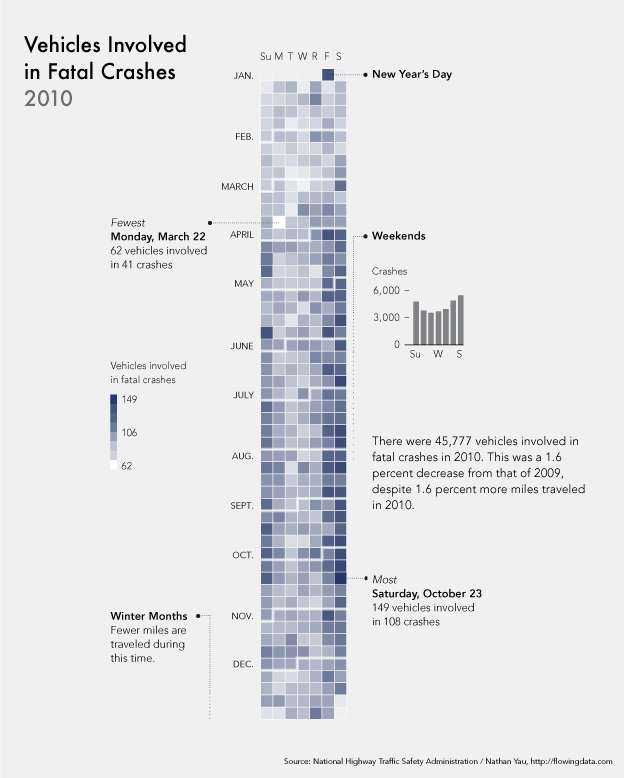Link to the dashboard: http://mikerazar.com/chart-it/2015/01/14/nba-player-statistics-dashboard/
Background
The author uses three dashboards to compare NBA players based on their statistics including offensive metrics, defensive metrics and other metrics. According to his explanation, for all graphs, x-axis represents the player’s career seasons. Y-axis represents each NBA statistics, such as field goal percentage and points per game.
What I like:
This dashboard gives a clear vision of data by using line chart to show the differences between players. For example, in the free throw percentage dashboard of offensive metrics, we can clearly see that Kobe Bryant and Michael Jordan have the free throw shooting accuracy compared to LeBron James.
What I don’t like:
First, I think it’s not a good idea for the author to set the x-axis as the player’s career seasons. The author should think about what his audience is going to be, NBA teams or the public. The setup will be fine if the audience is the public. They will be able to who is the best player based on their lifetime value. But if the audience is NBA teams, it will be more valuable if the author can change the x-axis into regular season, such as Season 2014-2015 or Season 1997-1998. The reason for that is because the game intensity is different in the past and now. Kobe Bryant may face a more tough defender than Michael Jordan in the past. So the information will be very limited for team trading purpose.
Second, as I mentioned previously, the game intensity in each period is very different. Also, some players may focus on offense more and some players may focus on defense more. So it will be hard for the audience to compare the players based on some many charts. In order words, when the audience want to determine a top offensive player, which graph should he pick, points per game or assists per game? So a better way will be to give a total score to each player and come out a final graph. Namely, the author can set a coefficient value of each statistic based on its importance. For example, set a total offensive score for each player. It will let the audience make a pick easily.
Conclusion
This is a good dashboard, which represents its data clearly towards the audience. However, the author should think about more on who his audience is and what will be a more efficient way to present the data.
Reference:
http://mikerazar.com/chart-it/2015/01/14/nba-player-statistics-dashboard/
http://scholarship.claremont.edu/cgi/viewcontent.cgi?article=2302&context=cmc_theses


